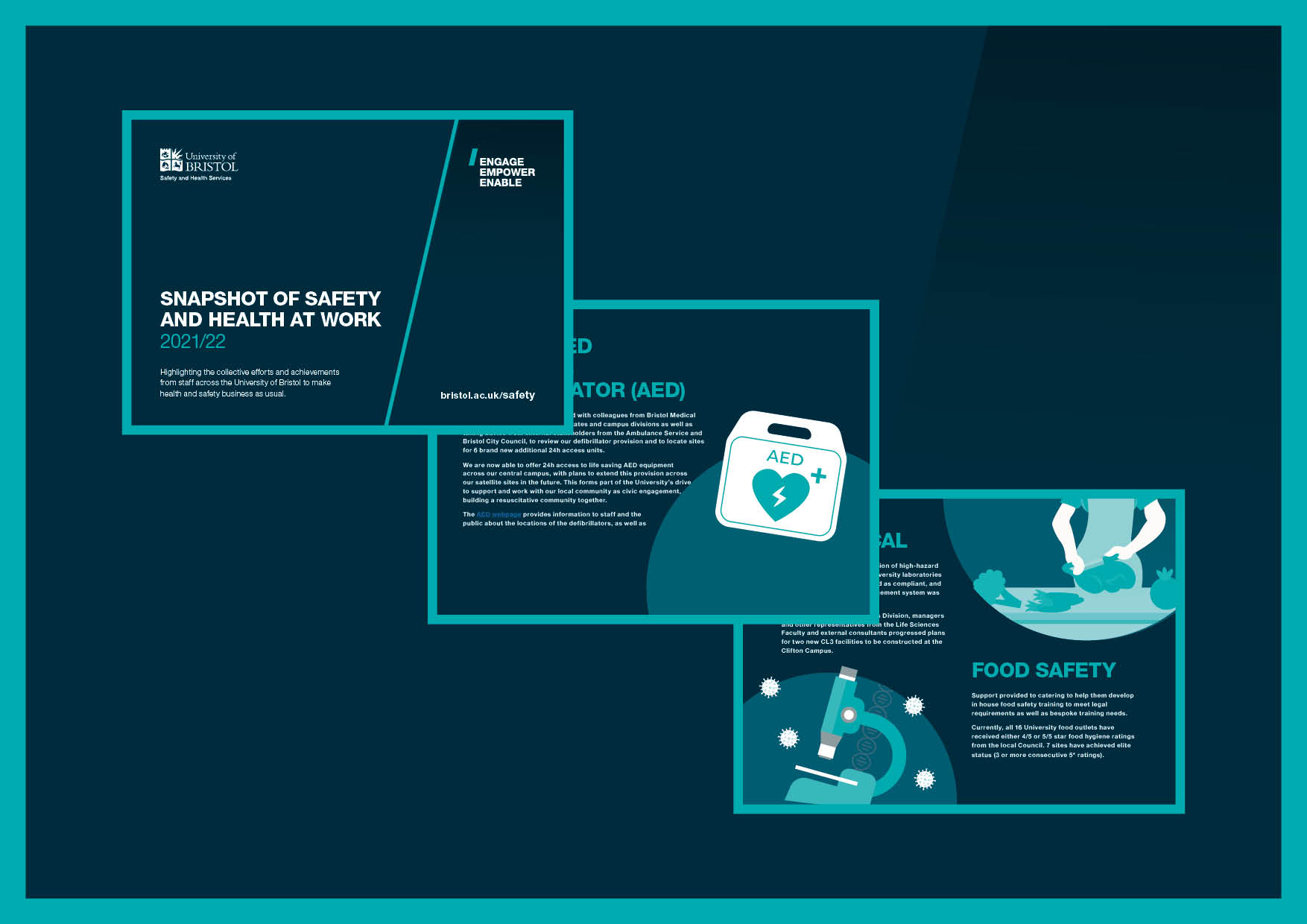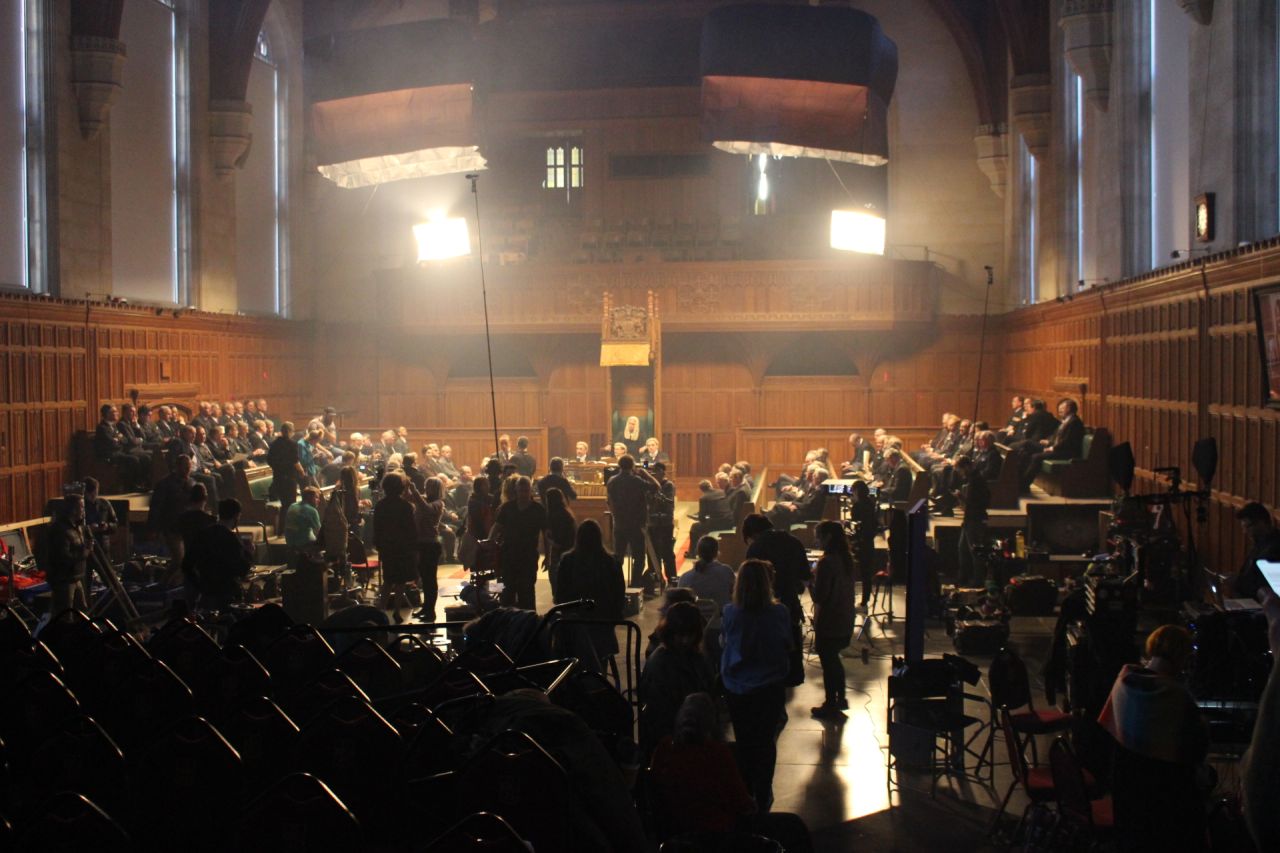About us
Pushing boundaries
We empower staff and students to push boundaries further. The purpose of health and safety isn’t to stop people from doing things, it’s entirely the opposite. It makes life-changing research and world-class teaching possible.
By understanding and mitigating against risks, we give the University community the freedom to be tenacious and confident leaders, to better understand the world’s most significant challenges and work towards solutions with lasting impact.
 Snapshot of Health and Safety 2021-22
Snapshot of Health and Safety 2021-22
Highlighting the collective efforts and achievements from staff across the University to make health and safety business as usual.
Creating an environment of excellence
Striving for an environment of excellence keeps staff and students safe when they work and study, enabling our community to deliver at its best.
Supporting critical research
Health and safety processes play an important role in supporting research, some of which has life-saving consequences. For example:
Trials of advanced therapeutic medicines in Bristol hospitals were made possible by:
- Advising on the safe administration of trial GM medicines by clinical staff.
- Ensuring compliance with regulations protecting community health and safety and the environment.
- Collaborating with NHS staff to enable trials of important new treatments in Bristol.
Early research into COVID-19 was supported by health and safety processes, such as:
- Fast-tracking research into how the virus functions.
- Rapid turnaround of safety reviews enabling regulatory clearance for timely action.
- Assisting public health bodies and collaborating with other universities and UK regulators.
Making it manageable
There are elements of health and safety that might surprise you. For example, did you know that working alone presents its own health and safety risks?
A welcome surprise might be that low risk activities often do not require lots of admin. The best thing you can do is consider health and safety during your planning stages. You don’t need to overcomplicate things and there won’t typically be piles of paperwork to fill out.
Health and safety processes should be manageable, and you can speak with our team of advisers to find out exactly what you need to do.
Finding balance
Often, health and safety comes down to balancing risks, and this doesn't necessarily need to be complicated.
For example, think of a day spent using your computer. Humans are not well-suited to prolonged static poses, so to balance the risks of working at a computer, you should:
- sit with good posture
- use appropriate equipment
- take regular breaks
- build movement into your day
Developing healthy working habits like these bring physical and mental benefits that can improve our lives both in and out of work.
Just like balancing the risks of sitting at a desk with the correct equipment and movement breaks, much of our guidance focuses on balancing risks with mitigating measures.
Making health and safety business as usual
All of this contributes to the University's vision of 'Making health and safety business as usual,' which is outlined in the Group Health and Safety Policy.
When health and safety becomes a natural and fundamental element of behaviours, it is not an afterthought or bolt-on, but 'business as usual'. This positively influences the planning and decision-making of our staff and students, and their way of living, working and studying at the University.
University policy
At the heart of the University’s approach to health and safety is the Group Health and Safety Policy.
This is supported by the Roles, Responsibilities and Organisation resource.

With measures to keep us safe, exciting things can happen. Anything from serving liquid nitrogen ice-cream at the Summer Ball to exhibiting the Museum of the Moon art installation.

This photo shows behind-the-scenes of The Trial of Christine Keeler, where the Great Hall was transformed into the House of Commons for screen.
Production teams worked with the University to complete health and safety checks including site-specific risk assessments for each location.
These processes have also enabled film crews to use University premises for productions including Dr Who, Sherlock, and David Attenborough documentaries.
.jpg)